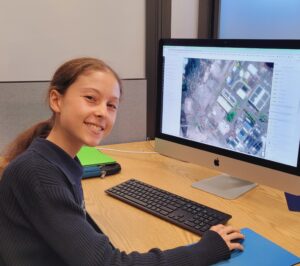
Camry Gach is from Maui, Hawaii. She attends Dartmouth College as a first-year undergraduate student and intends to earn a degree in environmental engineering. She is passionate about applying her knowledge in STEM and environmental studies to create designs that work towards sustainable development goals. Her high school engineering project involved tracking the sun with a mirror throughout the day to maximize its reflection onto a solar panel. At NELHA, Camry looks forward to gaining on-site experience in water resource management and learning to analyze hydraulic systems using engineering software tools. In her free time, Camry enjoys snorkeling, dancing, and exploring the outdoors.
Home Island: Maui
High School:
Institution when accepted: Dartmouth College
Incorporating Geolocation and an Inventory Database into Seawater Distribution System Topology Maps
Project Site: Natural Energy Laboratory of Hawaii Authority, Kona, HI
Mentors: Keith Olson & Dean Towle
Project Abstract:
The Hawaii Ocean Science and Technology (HOST) Park supplies an extensive amount of seawater through its distribution system, serving customers such as aquaculture farms, Ocean Thermal Energy Conversion (OTEC) laboratories, and aquatic species habitats. A full-facility, geospatial distribution map of the pipeline was needed so that the Natural Energy Laboratory of Hawaii Authority (NELHA) can strategically plan scheduled maintenance shutdowns that minimize interruption to surrounding clients. Identifying pipeline features geospatially also enhances NELHA’s organization of instrument inventory and improves communication between operations staff when performing repairs. This map was created using ArcGIS software, incorporating data from existing maps in addition to geographic coordinates and pipeline elevations collected by a previous NELHA intern, Daniel Gregg, using a Global Navigation Satellite Receiver. The selected data structure enables users to query the map’s database related to instrument inventory in need of repairs, different water line systems, and main vs. lateral lines. Using ArcGIS’s Experience Builder interface, various filtered maps appear on a single webpage to simplify user navigation. Balancing ease-of-use for operations field workers, the maintenance crew, and program developers was a key consideration in justifying data storage methods and map design. This map is expected to aid in the scheduled repair planning process and monitoring pipeline conditions throughout the HOST Park.